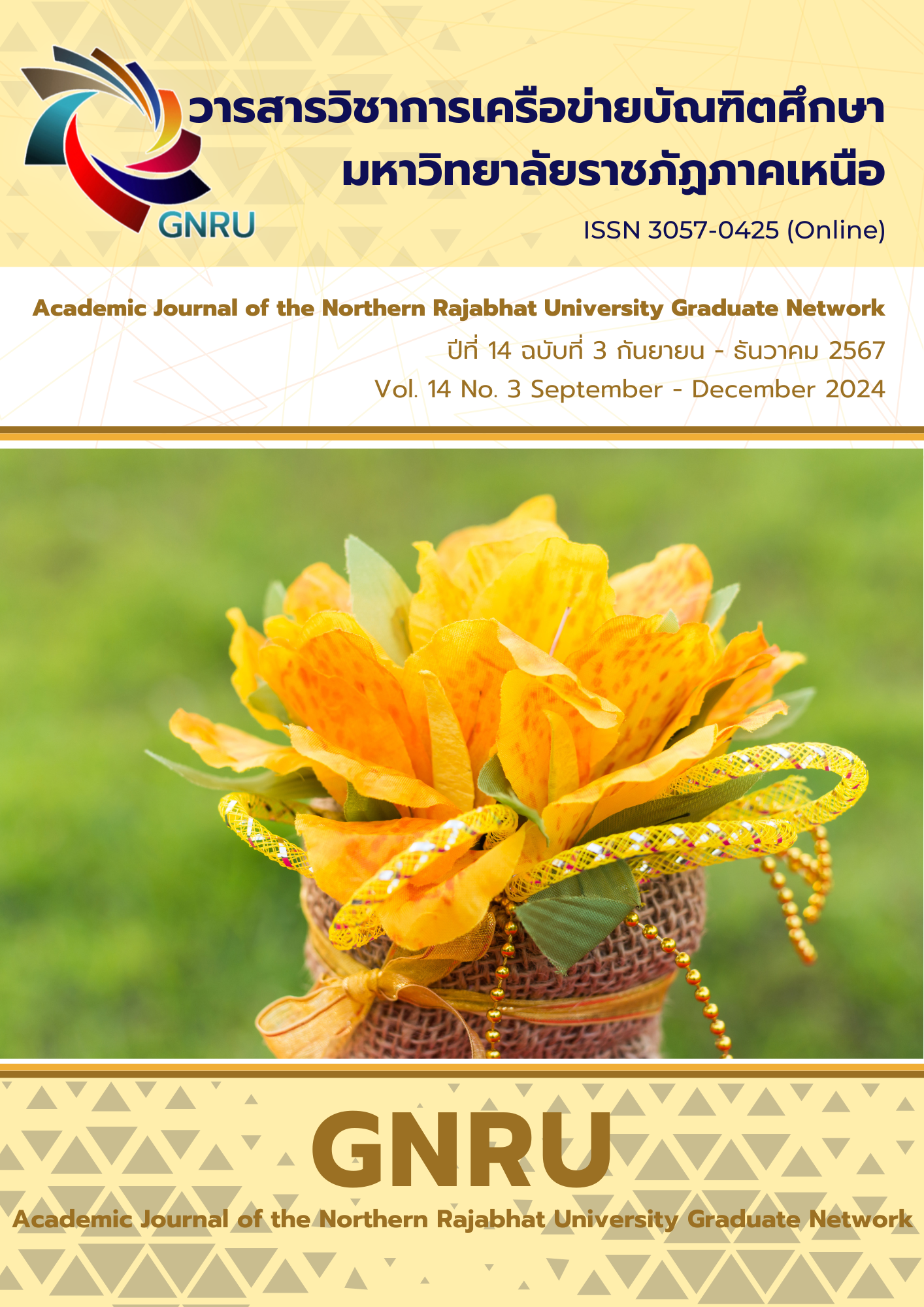4 การพัฒนาแหล่งท่องเที่ยวเชิงกีฬาฟุตบอล ด้วยประสบการณ์การถวิลหาอดีต
Main Article Content
บทคัดย่อ
การวิจัยครั้งนี้มีวัตถุประสงค์ 1) เพื่อศึกษาประสบการณ์การถวิลหาอดีตของการท่องเที่ยวเชิงกีฬาฟุตบอล และ 2) เพื่อนำเสนอแนวทางการพัฒนาแหล่งท่องเที่ยวเชิงกีฬาฟุตบอลด้วยประสบการณ์การถวิลหาอดีต เป็นการวิจัยเชิงคุณภาพเก็บรวบรวมข้อมูลโดยการสัมภาษณ์เชิงลึก ผู้ให้ข้อมูล ได้แก่ ผู้บริหารสำนักงานการท่องเที่ยวและกีฬาจังหวัด ผู้บริหารองค์การบริหารส่วนจังหวัด ผู้บริหารสโมสรฟุตบอล ผู้ประกอบการธุรกิจโรงแรม ผู้ประกอบการธุรกิจร้านอาหาร ผู้ประกอบการร้านค้าและของที่ระลึก ประชาชนและนักท่องเที่ยวในพื้นที่ที่มีทีมฟุตบอลแข่งขันในไทยลีก 1 และไทยลีก 2 จำนวน 32 คน การวิเคราะห์ข้อมูลโดยการวิเคราะห์เนื้อหา ผลการวิจัย พบว่า
1) ประสบการณ์การถวิลหาอดีตของการท่องเที่ยวเชิงกีฬาฟุตบอล ประกอบด้วย 6 ด้าน ได้แก่ ด้านประสบการณ์ ด้านทีมกีฬา ด้านสภาพแวดล้อม ด้านกระบวนการทางสังคม ด้านเอกลักษณ์ส่วนบุคคล และด้านเอกลักษณ์ของกลุ่ม
2) แนวทางการพัฒนาแหล่งท่องเที่ยวเชิงกีฬาฟุตบอล มี 6 แนวทาง คือ การสร้างสิ่งดึงดูดใจการท่องเที่ยวกีฬาฟุตบอล ความสะดวกในการเข้าถึงแหล่งท่องเที่ยวกีฬาฟุตบอล การเพิ่มสิ่งอำนวยความสะดวกสำหรับการท่องเที่ยวกีฬาฟุตบอล การจัดกิจกรรมการท่องเที่ยวกีฬาฟุตบอล การสร้างบรรยากาศการท่องเที่ยวกีฬาฟุตบอล และการจัดการความปลอดภัยการท่องเที่ยวกีฬาฟุตบอล ผลการวิจัย สามารถช่วยให้ผู้เกี่ยวข้องการท่องเที่ยวกีฬาฟุตบอลนำเสนอสินค้าและบริการที่สามารถสร้างประสบการณ์การถวิลหาอดีตให้เหมาะสมกับความต้องการของนักท่องเที่ยวเชิงกีฬาฟุตบอล
Article Details
References
Alamdari, N. N., & Abdi, K. (2019). The impact of physical activity in the control of abnormal behaviours of Iranian students. Atena Journal of Sports Sciences, 1(5), 1-11.
Babbie, E. R. (2011). Introduction to social research (5th ed.). Wadsworth Cengage learning Belmont, Calif.
Brunt, P., & Courtney, P. (1999). Host perceptions of sociocultural impacts. Annals of Tourism Research, 26(3), 493-515.
Chen, N., & Funk, D. C. (2010). Exploring Destination Image, Experience and Revisit Intention: A Comparison of Sport and Non-Sport Tourist Perceptions. Journal of Sport & Tourism, 15(3), 239–259.
Chen, H.-B., Yeh, S.-S., & Huan, T.-C. (2014). Nostalgic emotion, experiential value, brand image, and consumption intentions of customers of nostalgic-themed restaurants. Journal of Business Research, 67(3), 354-360.
Cho, H., Ramshaw, G., & Norman, W. C. (2014). A conceptual model for nostalgia in the context of sport tourism: re-classifying the sporting past. Journal of Sport & Tourism, 19(2), 145-167.
Dabphet, S. (2018). Tourism Attributes and Communication Channels of Tourism Image for Future Tourists: The Case of Phitsanulok. Journal of Community Development Research (Humanities and Social Sciences), 11(1), 79-98.
Dickman, S. (1996). Tourism : an introductory text (2nd ed.). Hodder Education Sydney.
Fairley, S. (2003). In Search of Relived Social Experience: Group-Based Nostalgia Sport Tourism. Journal of Sport Management, 17, 284-304.
Getz, D. (2008). Event tourism: Definition, evolution, and research. Tourism Management, 29(3), 403-428.
Gibson, H. J. (1998). Sport Tourism: A Critical Analysis of Research. Sport Management Review, 1(1), 45-76.
Gibson H. J. (2002), Sport Tourism at a Crossroad? Considerations for the future, in Gammon S., Kurtzman J. (a cura di), Sport Tourism: principles and practice. Eastbourne: Leisure Studies Association, 76, 111-128.
Gibson, H. J., Attle, S. P., & Yiannakis, A. (1998). Segmenting the active sport tourist market: A life-span perspective. Journal of Vacation Marketing, 4(1), 52-64.
Gibson, H. J., Qi, C. X., & Zhang, J. J. (2008). Destination Image and Intent to Visit China and the 2008 Beijing Olympic Games. Journal of Sport Management, 22(4), 427-450.
Haripriya, S. (2020). Memory, Ethnography and the Method of Memory. Sociological Bulletin, 69(2), 1-16.
Hung, W.-L., Lee, Y.-J., & Huang, P.-H. (2016). Creative experiences, memorability and revisit intention in creative tourism. Current Issues in Tourism, 19(8), 763-770.
Jurowski, C., & Gursoy, D. (2004). Distance effects on residents' attitudes toward tourism. Annals of Tourism Research, 31, 296-312.
Kim, J.-H., Ritchie, J., & Tung, V. (2010). The Effect of Memorable Experience on Behavioral Intentions in Tourism: A Structural Equation Modeling Approach. Tourism Analysis, 15, 637-648.
Noy, C. (2008). The Poetics of Tourist Experience: An Autoethnography of a Family Trip to Eilat. Journal of Tourism and Cultural Change, 5, 141-157.
Robinson, M. J., & Trail, G. T. (2005). Relationships among Spectator Gender, Motives, Points of Attachment, and Sport Preference. Journal of Sport Management, 19(1), 58-80.
Shonk, D. J., & Chelladurai, P. (2008). Service quality, satisfaction, and intent to return in event sport tourism. Journal of sport management, 22(5), 587-602.
Thongyuukong, A. (2012). Fans: cultural practices of Thailand’s domestic football club fans. Bangkok: Faculty of Sociology and Anthropology Thammasat University.
Tsuji, Y., Bennett, G., & Zhang, J. (2007). Consumer satisfaction with an action sports event. Sport Marketing Quarterly, 16, 199-208.
Yang, J. (2018). Football Museums: History, Identity, and Connection. The International Journal of the History of Sport, 1-11.
Yeh, S.-S., Chen, C., & Liu, Y.-C. (2012). Nostalgic Emotion, Experiential Value, Destination Image, and Place Attachment of Cultural Tourists. In J. S. Chen (Ed.), Advances in Hospitality and Leisure (Vol. 8, pp. 167-187). Emerald Group Publishing Limited.

